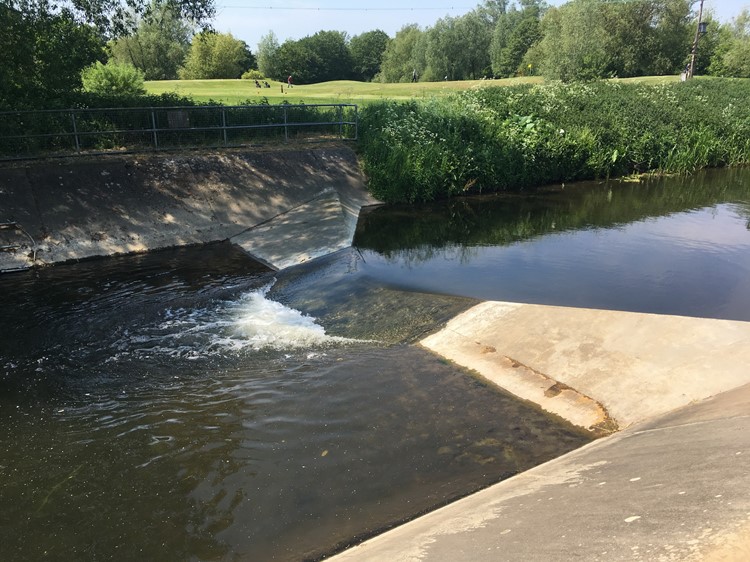Fish & Eel Pass Installation
Stonbury were contracted by the Environment Agency to construct a new fish and eel passage on the River Colne, allowing safe migration over an existing gauging weir.
Temporary cofferdams were installed both up and downstream of the weir and a pumped system was used to divert water around the working area, whilst maintaining a consistent flow downstream. This was regularly monitored to ensure there was enough flow diverted at all times.
A temporary outstation was also installed upstream of the works to monitor the river. This allowed the water levels to be observed out of hours, ensuring responsive action could be taken, should a flood event or a drop in the water levels upstream occur.
Once fully drained down, silt and debris were removed from the riverbed and timber shuttering was installed ready for a concrete extension to the truncated weir.
A recess was cut into the top section of the existing weir to allow the new eel tiles to be installed at the correct level. Holes were then drilled into the existing concrete, allowing the tiles to be fixed into position with an epoxy resin. Due to the complex shape of the weir, the downstream section of eel tiles were fixed with a lateral cross-fall to match the existing slope.
To complete the eel passage, rounded oak timber was bolted to the end of the top baffle to prevent damage from any debris, and a stainless-steel plate was installed over the crest.
Prefabricated recycled fish baffles were then fixed along the existing weir structure using an epoxy resin and stainless-steel fixings to secure them. The baffles were chamfered, gradually increasing in size, down the weir face in accordance with the design. Another baffle length was used to form a small wall between the fish baffles and the eel tiles to ensure the eel tiles remain wet in low flow conditions.
Following completion of the works, the temporary cofferdams were dismantled in a controlled manner to ensure the safety of the personnel and to allow water levels to stabilise gradually.


